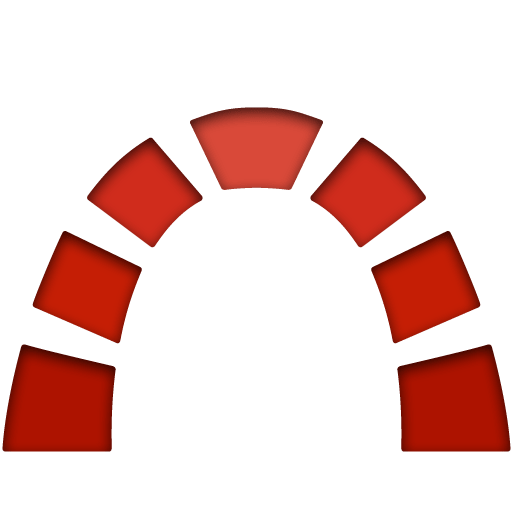Redmine is an open-source, web-based project management and issue-tracking system that provides a comprehensive set of features for managing projects, tasks, and issues. It is written in Ruby on Rails and is designed to help teams and organizations efficiently manage their projects and collaborate on software development, as well as other types of projects.
Redmine is commonly used by software development teams, but it can also be adapted for various project management purposes, including IT project management, product development, and general task tracking. Its flexibility and open-source nature make it a popular choice for organizations looking for a customizable and cost-effective project management and issue-tracking solution.

Price Calculator
Data Centers Around the Globe

Frequently Asked Questions
Operating system requirements for Redmine 4.0 and higher:
Redmine should run on most Unix, Linux, macOS and Windows systems as long as Ruby is available on this platform. See specific installation HowTos here.
Redmine excels as a project management tool in various scenarios, catering to diverse team needs and project complexities. Here are some of its most common use cases:
Agile project management: Redmine supports Kanban boards, sprints, backlogs, and user stories, ideal for agile methodologies and iterative development.
Issue tracking and bug reporting: Efficiently track bugs, tasks, and features with assigned priorities, due dates, and discussions.
Version control integration: Seamlessly integrate with Git, SVN, Mercurial, and other version control systems for code management and bug tracking linkages.
Wiki and document management: Build collaborative knowledge bases and project documentation within Redmine for easy access and reference.
Creative project planning and workflow: Manage brainstorming sessions, design iterations, and client feedback with visual boards and task breakdowns.
Content management and collaboration: Organize content creation workflows, track revisions, and manage approvals with assigned roles and permissions.
Campaign planning and execution: Schedule marketing campaigns, track tasks, and measure performance with Gantt charts and reports.
Several project management and issue tracking tools serve as alternatives to Redmine, each with its own set of features and strengths. Here are some popular alternatives:
Jira
Trello
Asana
GitLab
GitHub Projects
Bugzilla
Taiga
ClickUp
YouTrack
Wrike
Here are some key distinctions between Redmine and other project management tools:
Open Source and Customization: Redmine is an open-source tool, allowing users to access and modify its source code. This provides a high level of customization, enabling users to tailor the tool to their specific requirements. Many other project management tools are proprietary, offering limited customization options.
Issue Tracking Focus: Redmine has a strong emphasis on issue tracking and bug management. It provides a flexible system for creating, updating, and tracking issues, making it suitable for software development and other industries where issue tracking is crucial. Some project management tools may not offer the same level of granularity in issue tracking.
Flexibility and Extensibility: Redmine is known for its flexibility and extensibility. Users can define custom fields, workflows, and issue statuses, allowing for the adaptation of Redmine to various project management methodologies and processes. While other tools may be feature-rich, they might not offer the same level of flexibility in customization.
Integration with Version Control Systems: Redmine integrates well with version control systems such as Git and Subversion, providing seamless collaboration between project management and development teams. While other tools may offer integration with version control, the depth of integration and ease of use can vary.
Resource Management: Redmine includes basic resource management features, but it may not have the same level of sophistication as some dedicated project management tools. Tools like Microsoft Project or Workfront, for example, may provide more advanced resource management capabilities.
User Interface and Ease of Use: User interface preferences can vary, and some users may find Redmine’s interface to be less modern or user-friendly compared to other tools. Tools like Asana and Trello, for instance, are known for their intuitive interfaces and ease of use.
Cost and Licensing: Redmine being open source is often perceived as a cost-effective solution, especially for smaller teams or organizations with budget constraints. Proprietary tools, on the other hand, may involve licensing fees, which can be a significant factor in the decision-making process.
Agile Support: Redmine supports Agile methodologies, but some tools, such as Jira, are specifically designed with Agile in mind and provide more advanced features for Scrum and Kanban.
Here’s why Kamatera stands out as the most compelling option for Redmine hosting:
Cutting-edge hardware: Kamatera leverages Intel Xeon Platinum processors and NVMe SSD storage, guaranteeing exceptional performance for your solution.
Global network reach: With data centers strategically located across four continents, Kamatera provides low-latency access to your server, regardless of your users’ geographical locations. This minimizes lag and ensures consistent performance for geographically distributed teams.
Elastic infrastructure: Kamatera’s infrastructure seamlessly scales to accommodate your growing needs. You can easily add or remove resources on-demand, without downtime or performance bottlenecks.
Industry-leading security measures: Kamatera prioritizes security by implementing data encryption, access control mechanisms, vulnerability scanning, and compliance with industry standards like PCI DSS and SOC 2.
24/7 Support: Kamatera’s dedicated support team is available 24/7 to assist you with any questions or issues you may encounter with your Redmine hosting.













